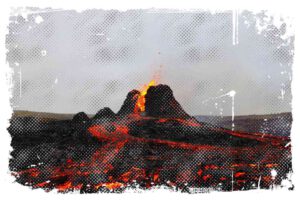The location of Poland has a strong influence on the position it holds in Europe and the world. The reason is that this location has strategic meaning both in military and political terms. It is located in the geometric center of Europe, at the point where Western and Eastern Europe meet. In terms of area, Poland is a relatively large country, one of the top ten in Europe. It’s a country with various types of climates and diverse landscapes.

What’s more, its location in the central part of the continent means that a lot of commercial and communication routes run through the territory of Poland. It connects the east with the west of Europe. A large population determines high density in Poland. This is especially true for large urban centers that provide employment. However, such high population density also leads to unemployment, which in some areas reaches almost 20%. The labor market situation is additionally worsened by the inflow of immigrants.
Physical Features of the Country’s Landscape
Poland is a diverse country in terms of terrain, although most of it is lowland. In the south, we have mountainous areas, with the highest peak in the country called Rysy, at 2499 meters above sea level. Moving further north, there are highlands, that pass into the lowlands. Pomerania, on the Baltic Sea coast, is located in the country’s far north.
75% of the country’s area is covered by lowlands, with an altitude of less than 200 meters above sea level. The average altitude for Poland is 173 meters above sea level. Interestingly, our country is one of the few European countries that has lake districts and large river valleys.
↳ PRO TIP: Do you like traveling? Then before you buy any ticket or book an attraction, check if it's available in this worldwide Viator Database. You may save a lot of money and time. No need to thank me :)
The terrain across Poland is sloped from the south to the northwest. Its lowest point is near Raczków Elblski in uawy Wilane, at an elevation of 1.8 meters above sea level.
The total area of Poland measures 322,57 km2, of which the land area is dominant and equals 311,888 km2. The internal waters of the sea cover 2005 km2, while the territorial waters cover 8682 km2.
| Territory km2 / % | ||
| total | 322 575 | 100.0 |
| land area | 311 888 | 96.7 |
| internal sea waters | 2005 | 0.6 |
| territorial sea | 8682 | 2.7 |
| Border length km / % | ||
| whole | 3511 | 100.0 |
| sea (at sea) | 395 | 12.6 |
| land | 3071 | 87.5 |
| coastline | 770 | none |
| with Russia | 210 | 6.0 |
| with Lithuania | 104 | 3.0 |
| with Belarus | 418 | 11.9 |
| with Ukraine | 535 | 15.2 |
| with Slovakia | 541 | 15.4 |
| with the Czechs | 796 | 22.7 |
| with Germany | 467 | 13.3 |
The Most Distant Places in Poland
The northernmost tip of the country is Jastrzębia Góra, in Puck County. The southernmost will be Opolonek in Bieszczady County. The farthest west end of Poland is the bend of the Oder River near Osinowo Dolne, while to the east it is the bend of the Bug River in the village of Zosin.
- Jastrzębia Góra – Google Maps location
- Bend of the Bug River – Google Maps location
- Opolonek Peak – Google Maps location
- Bend of the Oder River – Google Maps location
Poland’s Regions and Their Unique Characteristics
There are several ways to determine the regions of Poland. The simplest classification is based on voivodships. For Poles, they are easy to remember because their names refer to the historical areas of Poland.
The 16-voivodeship division has its advantages. It allows you to determine, more or less, the boundaries of the historical regions of Poland. Traditionally, 5 main regions are called: Greater Poland, Lesser Poland, Mazovia, Silesia, and Pomerania.
I think the current regional division of Poland is not perfect. For example, the inhabitants of Czestochowa know something about this, as they have never felt like part of Silesia, but in fact they are in the Silesian province. There are more such examples. These are the regions in Poland called voivodeships:
- Lower Silesian Voivodeship
- Kuyavian-Pomeranian Voivodeship
- Lubelskie Voivodeship
- Lubusz Voivodeship
- Łódź Voivodeship
- Lesser Poland Voivodship
- Mazowieckie Voivodship
- Opolskie Voivodship
- Podkarpackie Voivodship
- Podlaskie Voivodship
- Pomeranian Voivodship
- Silesian Voivodship
- Świętokrzyskie Voivodship
- Warmian-Masurian Voivodship
- Greater Poland Voivodship
- Western Pomeranian Voivodship
The Diversity of Poland’s Regions
No matter what classification we use to divide Poland’s area, we will always find plenty of attractions to see there. Sometimes even local people do not know what valuable things are located in the nearest districts. Lower Silesia is full of castles, some of them are in great condition and still attract tourists every day. If you like abandoned places, please read my other article about abandoned palaces in Poland. In the Bieszczady Mountains, you will find old wooden Orthodox churches, in Pomerania, there are German or Dutch influences in architecture.
Each of Poland’s regions has its own cuisine that differs from the others. Unfortunately, it often takes some time to find a decent restaurant with regional cuisine, but the effort may be rewarded by the taste of truly regional dishes.
The Country’s Major Cities and Their Locations
Warsaw, Krakow and Lodz. These have consistently been Poland’s largest cities in terms of population for years. Within our borders, we have only one city with a population of more than one million. It is probably no secret to anyone that the reference is to Warsaw. Interestingly, outside the capital, only five Polish cities exceed 500,000 inhabitants.
- Warsaw: 1,792,718 residents
- Cracow: 780,796 residents
- Łódź: 667,923 residents
- Wrocław: 641,201 residents
- Poznań: 530,464 residents
- Gdańsk: 470,633 residents
- Szczecin: 396,472 residents
- Bydgoszcz: 341,692 residents
- Lublin: 337,788 residents
- Białystok: 296,401 residents
- Katowice: 289,162 residents
- Gdynia: 244,104 residents
- Częstochowa: 215,905 residents
- Radom: 208,091 residents
- Rzeszów: 198,476 residents
Warsaw (Warszawa)
The city covers an area of 517.2 km2. In December 2020, the eleventh bridge connecting both banks of the Vistula River in the city was opened. The object measures about 1505.5 meters in total length, which makes it the longest in Warsaw (but not in Poland, this title is held by the bridge measuring 1950 meters along the A1 highway near Grudziądz). There are two airports operating in Warsaw – Chopin Airport and Warsaw-Modlin Airport. The city is divided into 18 districts.
Cracow (Kraków)
Cracow is the second largest city in Poland. The scenery of the former capital city is quite different from the one Warsaw presents us. Because of the historic buildings, you will not see skyscrapers in the city center. Tall structures are also subject to restrictions in other districts. There are 18 districts in Cracow, just like in Warsaw. There are also 12 road bridges across the Vistula. The largest, the Cardinal Franciszek Macharski Bridge, connects Podgórze and Nowa Huta, and measures 1401.5 meters in length. There is also a large regional airport, the John Paul II Krakow Airport, which operates in Balice near Krakow.
Lodz (Łódź)
In terms of area, the city measures 293 km2. It is divided into 7 districts. Lodz cannot compete with Warsaw in terms of tall buildings.The city’s tallest building – an office skyscraper on Piotrkowska Street – measures 80 meters. By 2023, there will be a building in the city center which is going to take over the title of the tallest building in Lodz. It will be a luxury 32-floor hotel and it’s high will measure 110 meters. The city has one airport – Wladyslaw Reymont Airport Lodz.
Climate and Weather Patterns in Different Parts of Poland
The climate of Poland is described as moderately warm and transitional. It is a transitional climate between oceanic and continental. The average January temperature decreases significantly going from west to east. In the Szczecin area, it is -1°C (30°F), while in northeastern Poland it is about -5°C (23°F).
The lowest average July temperature occurs in northern Poland 17°C (63°F), while in central and southern parts of Poland it reaches 19°C (66°F).
The average annual temperature fluctuates between 7 and 8°C (45-46°F). Regardless of the season, the coldest areas in Poland are always the mountains in the south.
Annual air temperature amplitudes increase from 19°C (66°F) in the west to 23°C (73°F) in the east. This is a clear reflection of the continentalism and oceanism of the climate.
Features of Poland’s climate
The duration of the growing season (meaning the number of days with an average daily temperature of at least 5°C / 41°F) differs. The longest growing season – about 220 days – is in areas along the Odra Valley (Dolina Odry) and the western part of the Sandomierz Basin (Kotlina Sandomierska). In northeastern Poland, it is about 180 days, while in the mountains, it is between 100 and 150 days.
In a transitional climate, we have 6 seasons:
- pre-winter – temperature 0 to 5°C (32-41°F),
- spring – from 5 to 15°C (41-59°F),
- summer – above 15°C (59°F),
- autumn – from 5 to 15°C (41-59°F),
- pre-winter – from 0 to 5°C (32-41°F),
- winter – below 0°C (32°F).
The Political Significance of Poland’s Area
From a physical and geographic point of view, Poland has a definitely disadvantageous location. The only natural barrier in the form of mountain ranges in the south is on the border with countries whose military potential is definitely smaller than Poland’s. In the eastern and western directions, we are neighbors with countries where, based on the three potentials: demographic, economic, and military, two are always greater than the Polish ones.
On top of that, in case of Russia and Germany, we are losing in all three categories. The demographic and economic forecasts are favorable for Poland, but only if the long-term development trend is maintained. Considerably more favorable are the prospects for the change in Poland’s geopolitical position. Due to Poland’s accession to NATO, jointly with the Czech Republic, we form the eastern border of the pact, which currently includes the largest group of countries.
Of course, there is always the question of NATO’s effectiveness in providing military support to Poland. The answer to this question is now a matter of the political will of the United States and the other countries allied in the pact.
Bibliography:
- https://www.national-geographic.pl/artykul/najwieksze-miasta-w-polsce-gdzie-mieszka-najwiecej-ludzi
- https://www.polska.travel/pl/glowne-miasta
- https://depot.ceon.pl/handle/123456789/5500
- https://www.naukowiec.org/tablice/geografia/terytorium-i-granice-polski_788.html




